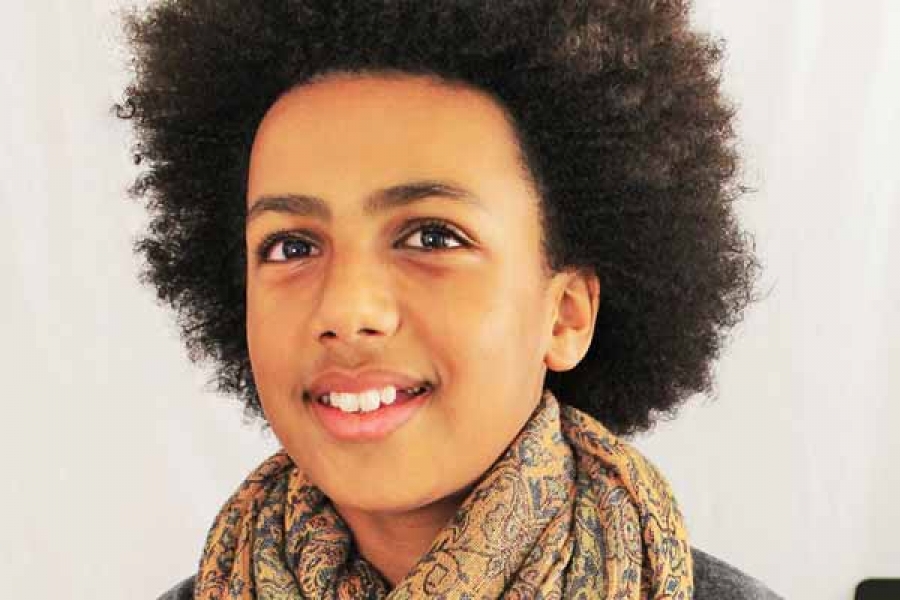4 Fierce Young Poets Defining the Genre’s Future
Recently, both controversy and curiosity swept across social media when four-year-old Nadim Shamma-Sourgen landed a book deal with British children’s book publisher Walter Books. Shamma-Sourgen, who hasn’t yet learned how to physically write, dictates his poems to his mother. With whimsical descriptions of “brave feelings” and “baddies,” the short, playful poems reflect Shamma-Sourgen’s age. According to the publisher, this is part of its charm: Shamma-Sourgen sums up emotions with a simplicity and earnestness that adults may fail to capture in their own work.
No matter how you feel about the divisive, headline-grabbing book deal, this same rationale can be seen in the work of today’s best teen poets, whose work shines with sincerity and assuredness. These four young writers are already boasting a big influence on the literary landscape.
1. Sophie Paquette
Paquette, 18, attended Interlochen Arts Academy, where she focused on writing. Paquette has won awards from Scholastic, Princeton University, and Bennington College for her early poetic talent. In 2019, Paquette was named a 2019 Presidential Scholar in the Arts, an honor awarded to just 20 high school students each year. Readers have praised her work for its ability to take risks, assert a strong voice, and transcend established forms.
This innovation comes through in her poem “I’m Growing Girls in My Backyard,” published in the online magazine Cosmonauts Avenue. In the poem, Paquette creatively uses flowers and plants as a metaphor for girlhood, reflecting themes of growth, consumption, and appearance-centered culture. “I bouquet my girls. / A vase in the kitchen / so I can watch my girls while I eat: such great / centerpiece, such conversation-starters, so / curated! I palm their chins, pocket the seeds / bled from their lips,” Paquette writes. “—and when they wilt, / I comb their curls and pluck their fruit / and dump the water in the sink.”
2. Taylor Fang
Fang, a Chinese-American poet and student who recently entered college, was appointed as part of the National Student Poets Program in 2019, the top honor for high school poets. Both The UK Poetry Society and The New York Times have recognized Fang’s work, as well. Fang’s work hopes to reflect her second-generation American upbringing, offering an unflinching, firsthand perspective on migration.
In “American Hello Kitty,” published in TAYO Literary Magazine, Fang boldly writes from her own experience, while also taking inspiration from a painting by Roger Shimomura. “How do the Chinese name their children— / by dropping pots and pans down the stairs, / said the white boy on the bus / home from third grade, and I wondered if this meant / he thought we were rich enough to break / all our cooking equipment just for a name— / the Chinese who invented / the oldest written language in the world,” Yang writes. “And I wondered if this meant / I was supposed to laugh along, and not say that the pans / would make sounds like Ben and Brock and / Jane and Claire, and that my language / was not supposed to be a taunt called inability / to assimilate.”
3. Solli Raphael
Poet and spoken word performer Solli Raphael catapulted into the poetry scene when his performance at the Australian Poetry Slam national final went viral in 2017, when he was just 12 years old. The poem tackled heavy issues like homelessness, gentrification, and environmentalism, joining a long history of poetry that strives for social change. Now 15, Raphael’s first collection Limelight is out from Andrews McMeel.
In “Game Changer,” which appears in the book, Raphael reflects on the overwhelming praise he has received and defines his own complex identity in the midst of it. “I am a gamechanger. / I am a game change, change game, low age, no rage / onstage arranger. / I am both yes and no, stay and go, catch and throw, / goodbye and hello, forest ranger,” Raphael asserts. “I am the lightning that makes thunder—rumble. / I am the space—outside of the box.”
4. Manasi Garg
Garg, a high school senior, won The Kenyon Review’s prestigious Patricia Grodd Poetry Prize for Young Writers, with her poem being chosen out of more than a thousand submissions. Garg is also a 2020 National Student Poet, appointed by a panel of judges that included Danez Smith and U.S. Poet Laureate Juan Felipe Herrera.
In her prize-winning poem “Cutglass,” Garg explores themes like immigration, violence, memory, and the power of family, balancing cruelty with tenderness. She writes, “I am trying to weep for / the rubber factory and the boy I kissed behind it, trying to / remember what it felt like to deliver my baby sister in the bedroom / beside the mango grove. What it felt like to bear the weight of another / heart: Cavernous, like thumbing through a photo album of the dead / grandmother you never listened to. Oh Mama, / Memory will always load the gun, and memory will find us scattered into lace. / . . . We will take this new country and wear it like a coat.”
Are you looking to foster a promising young poet in your life? Check out our tips for introducing poetry at every age.


